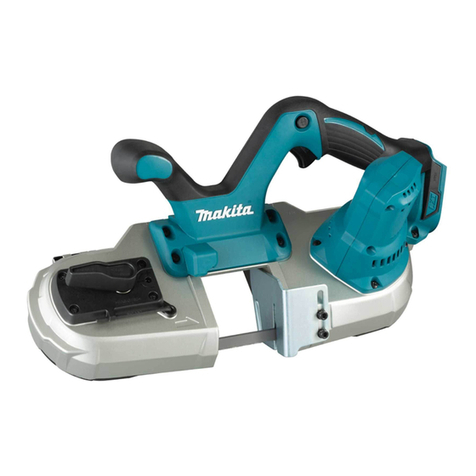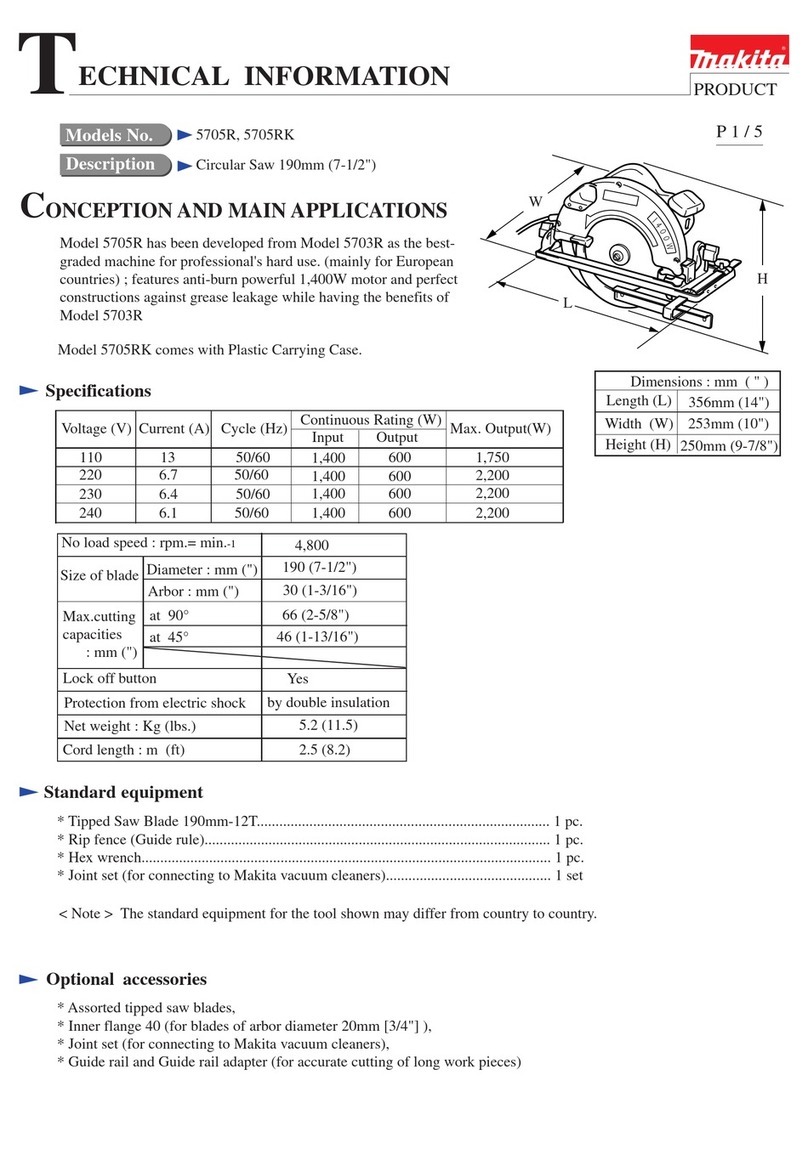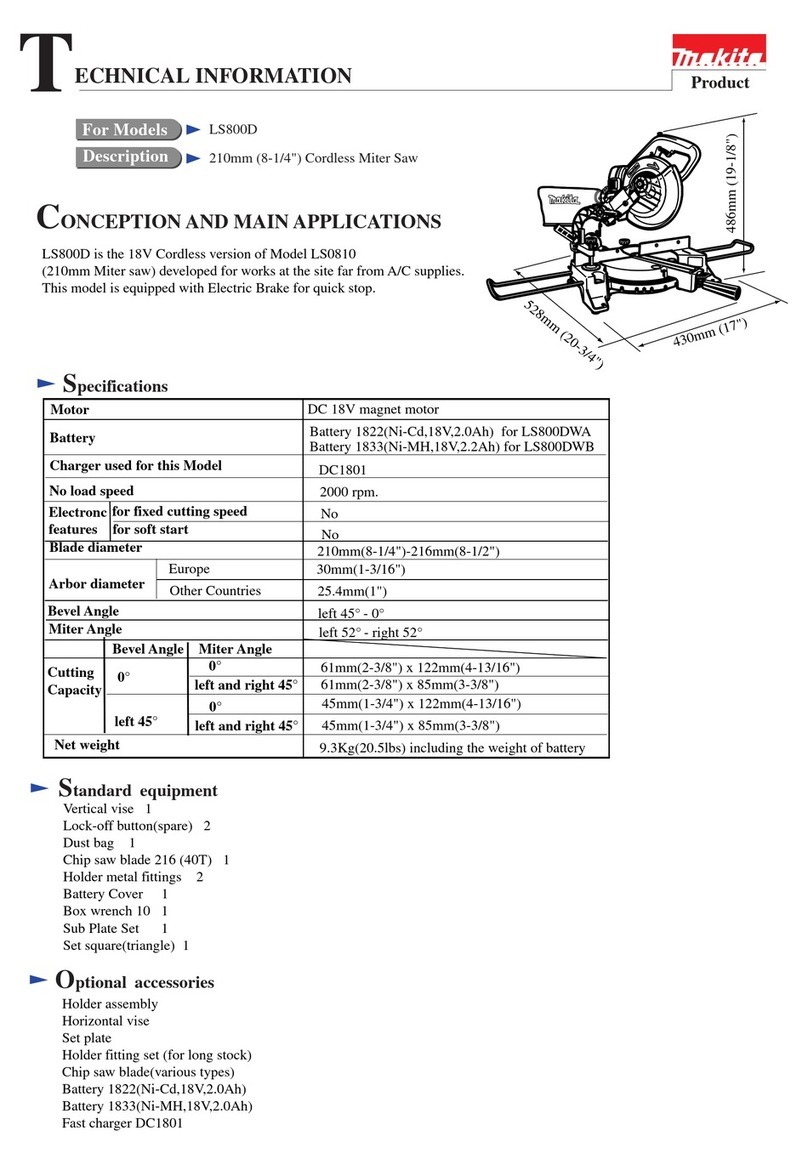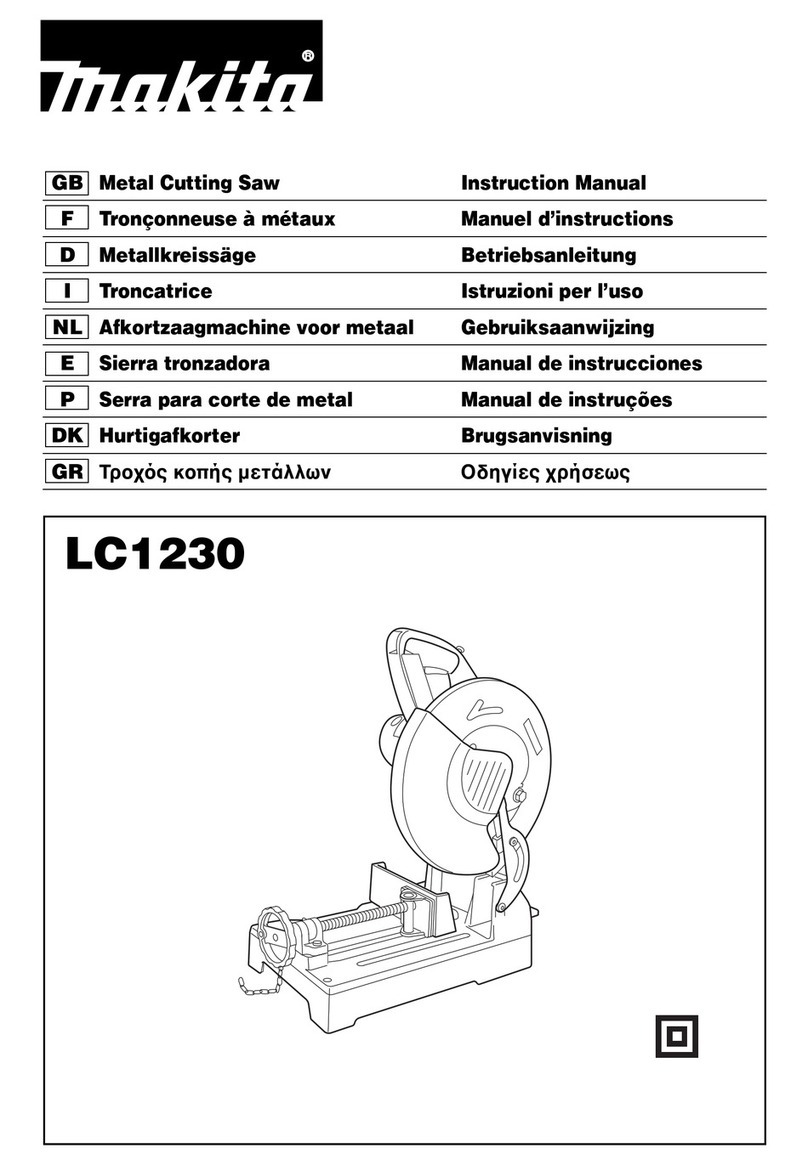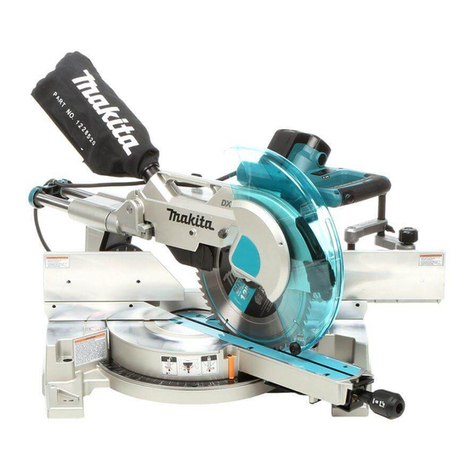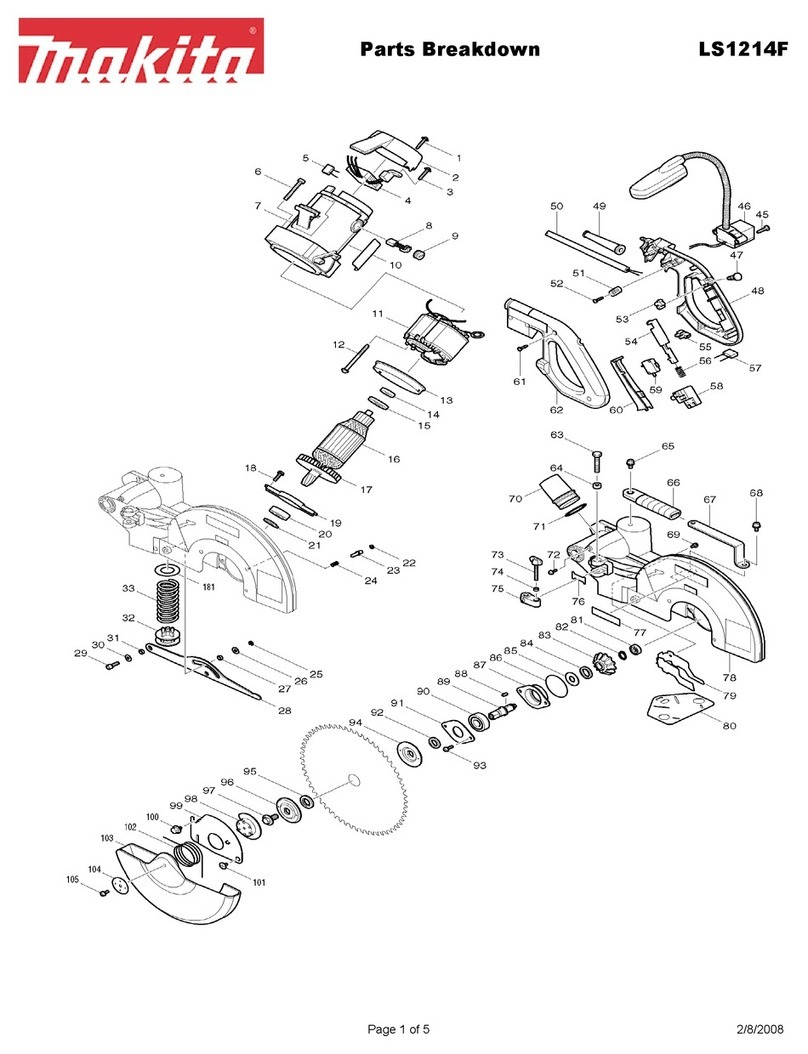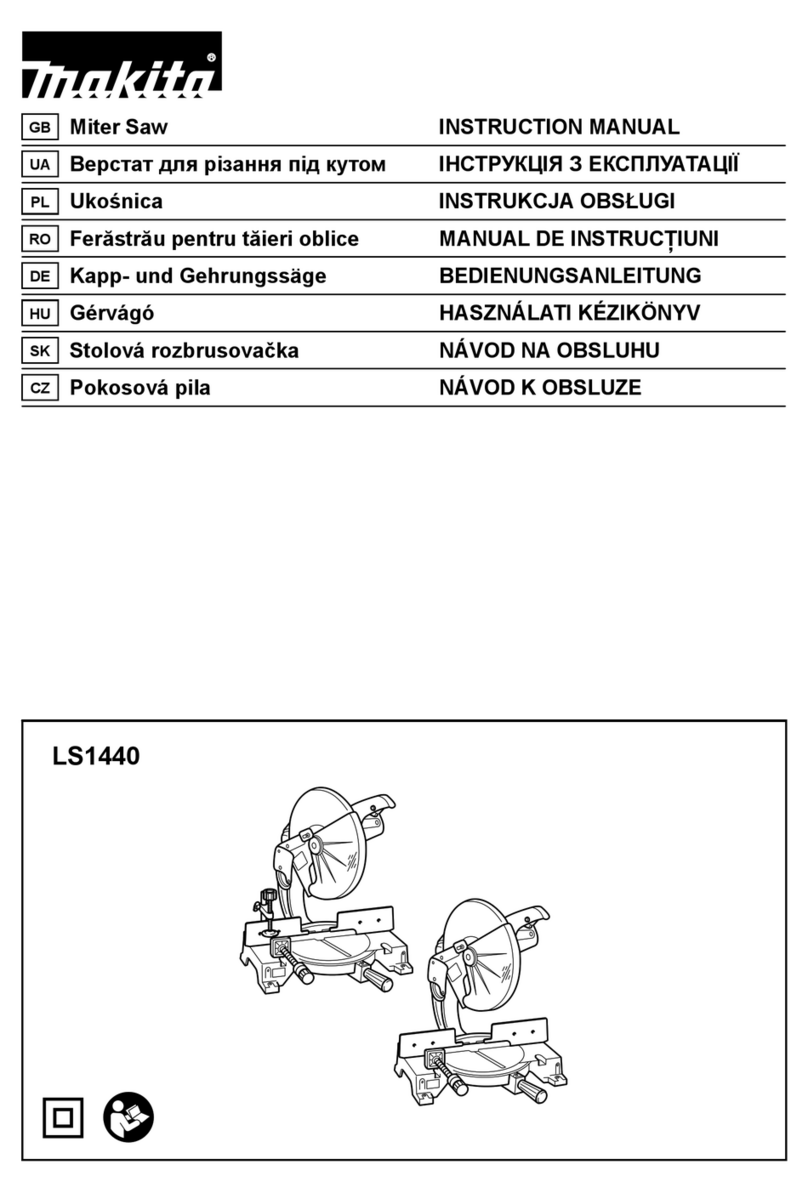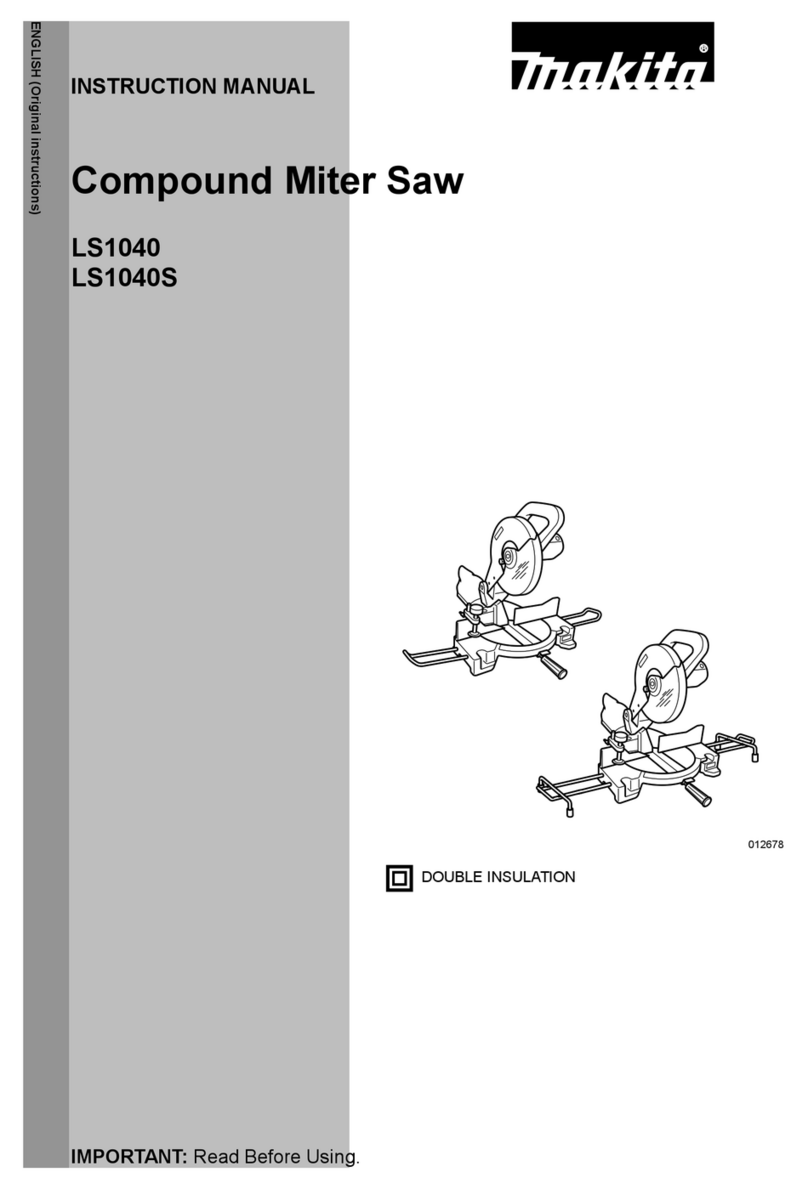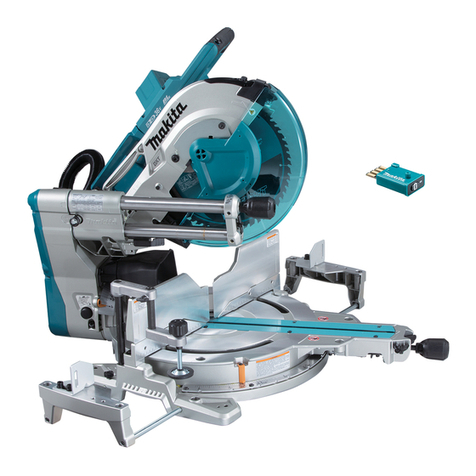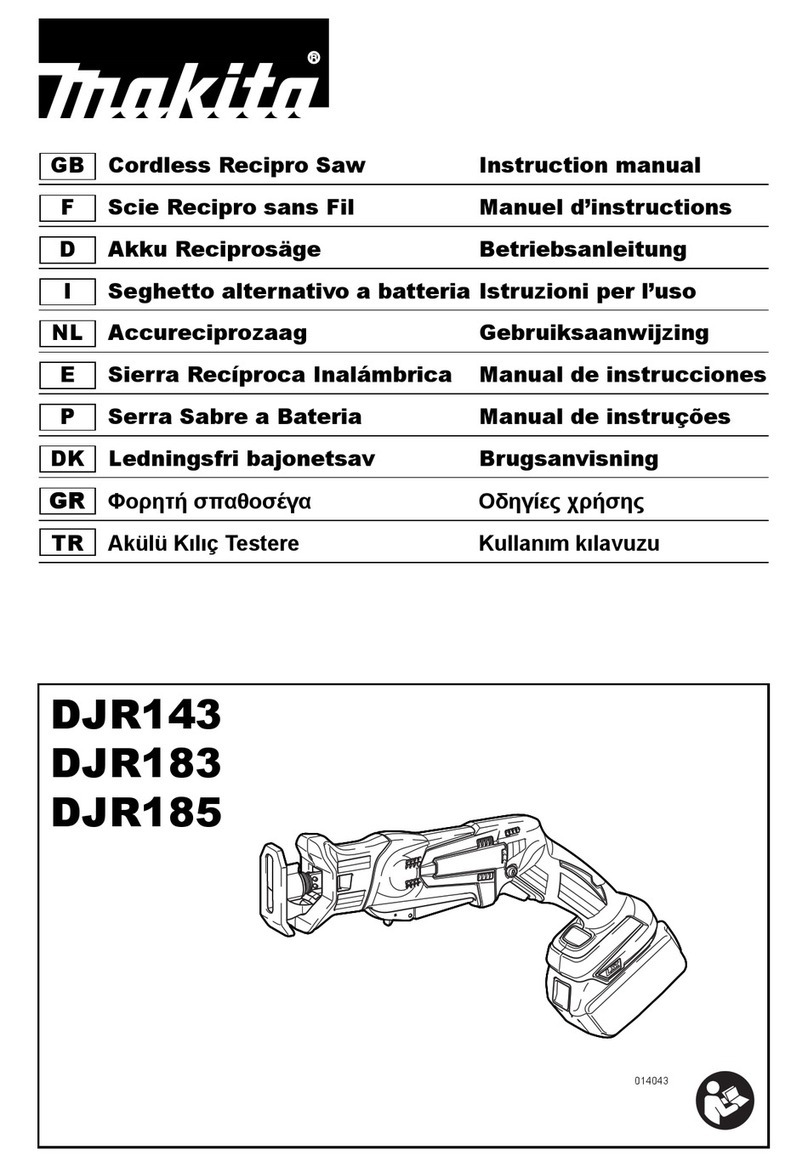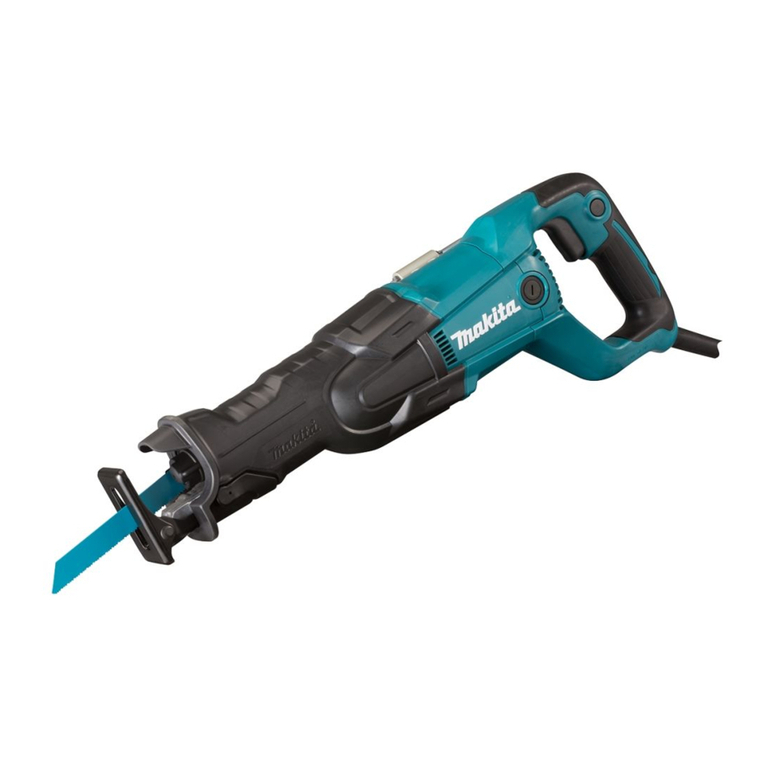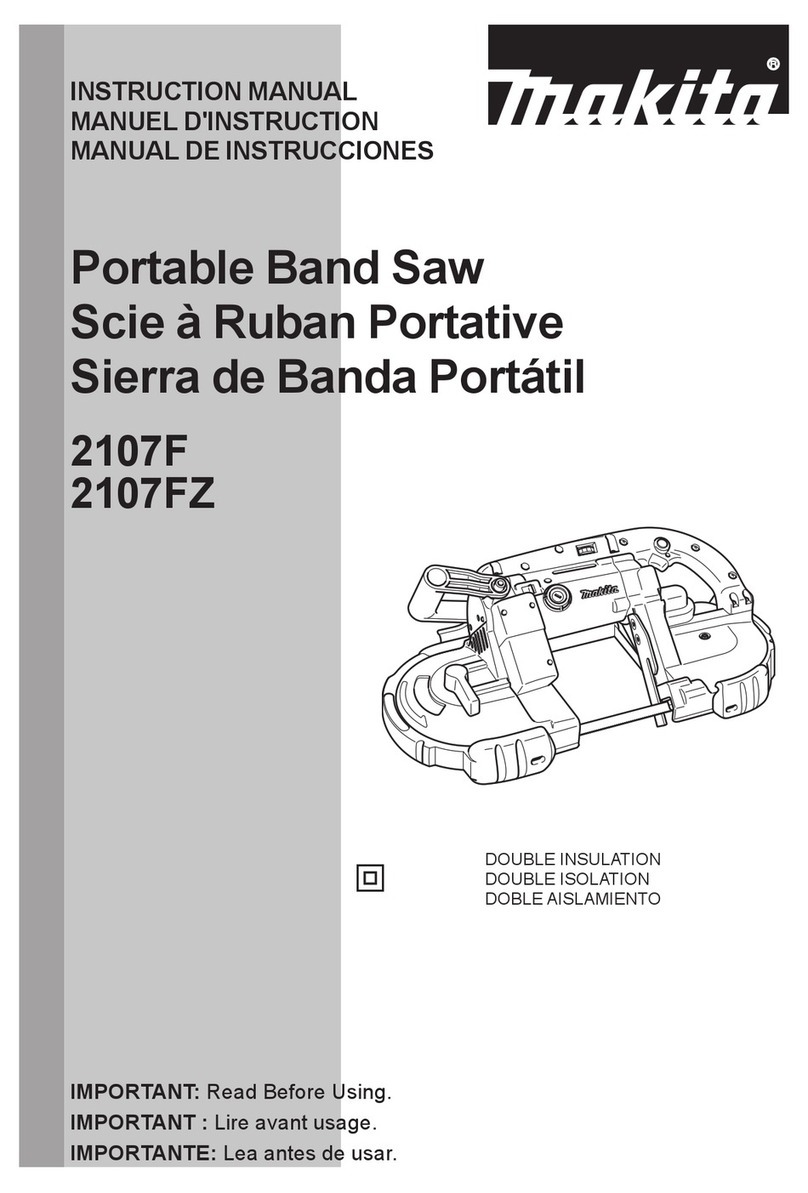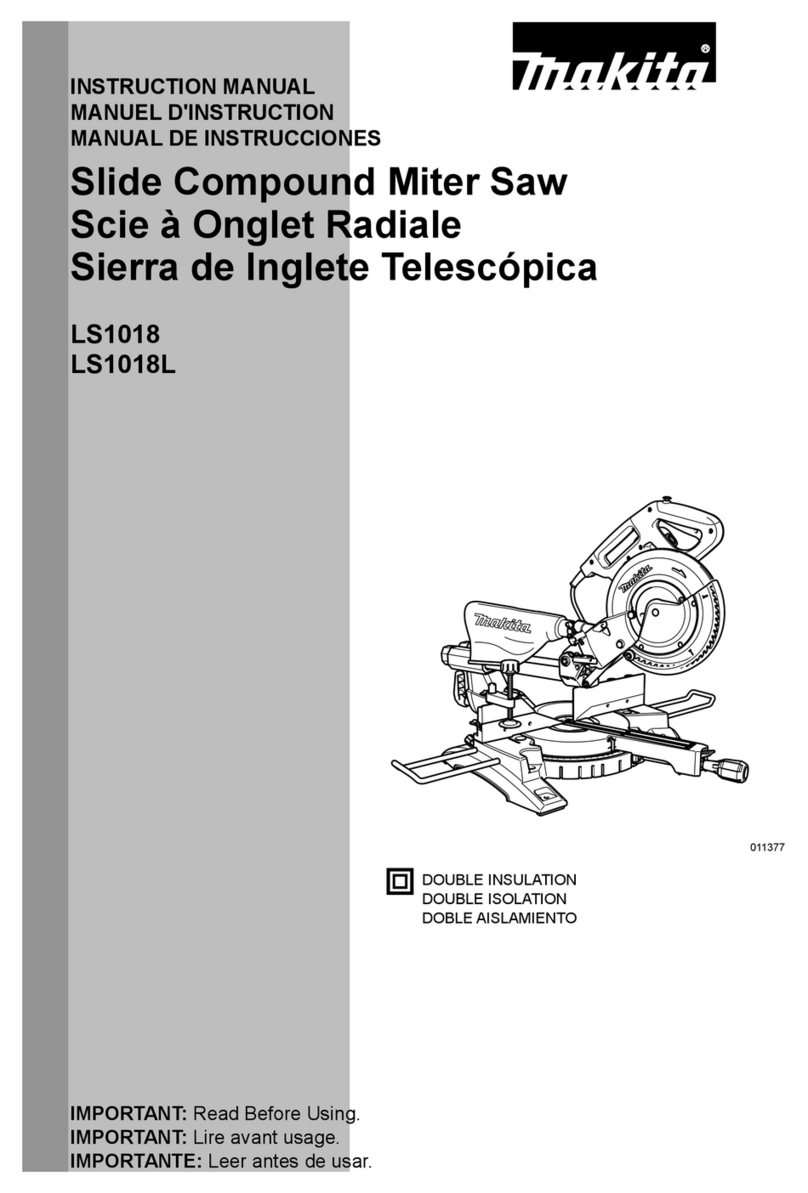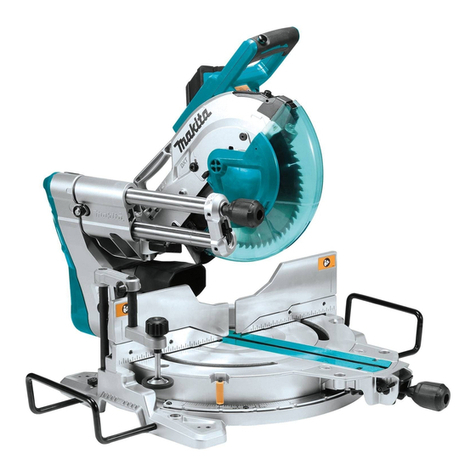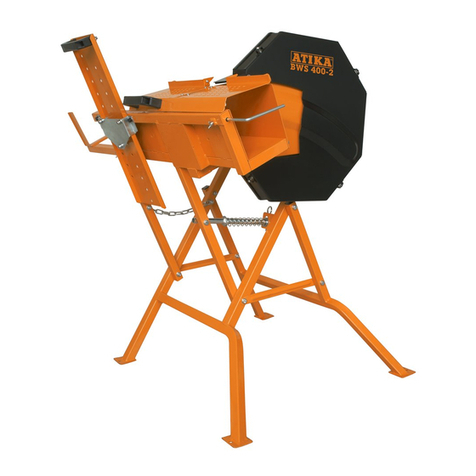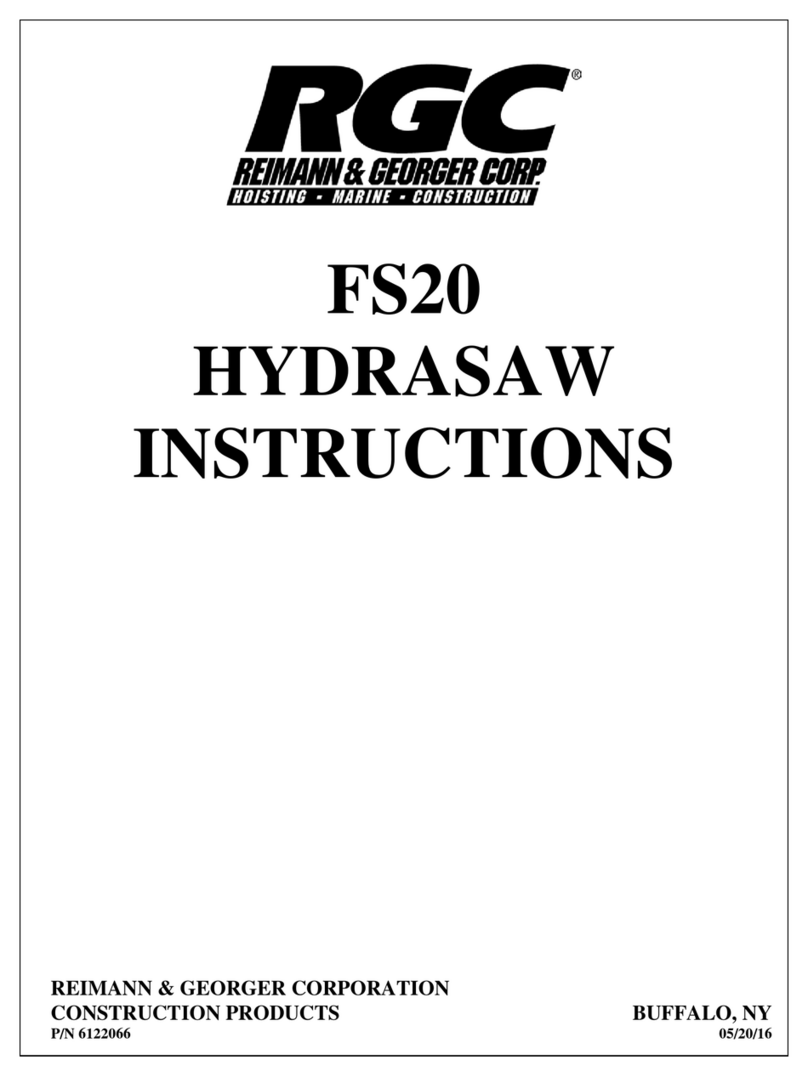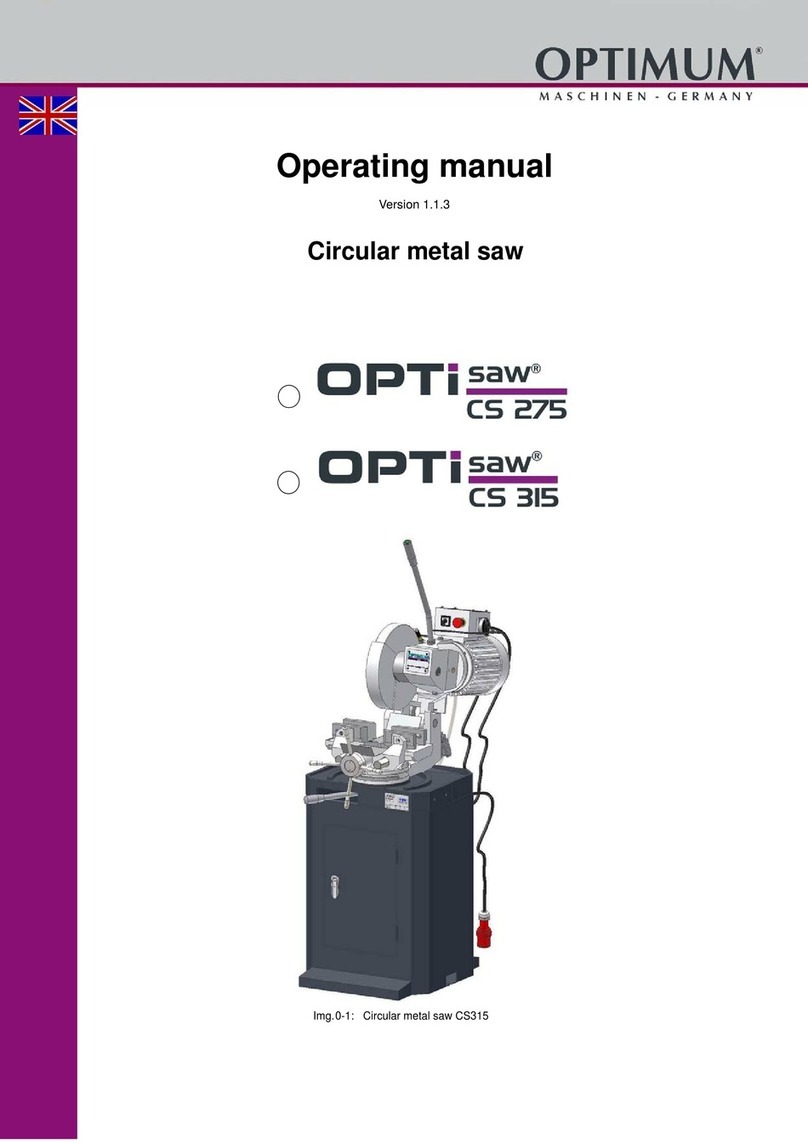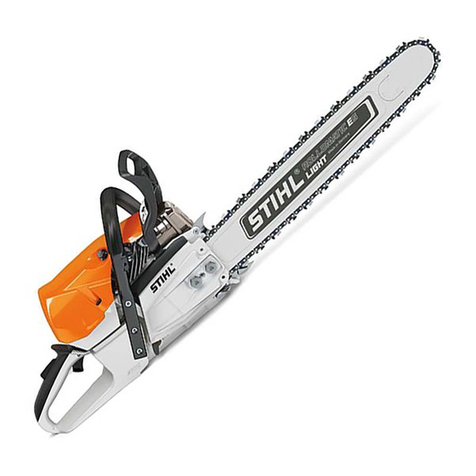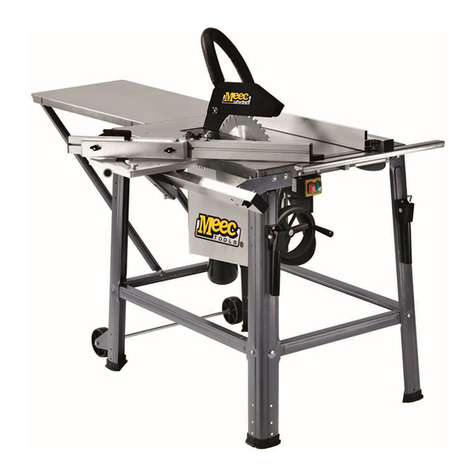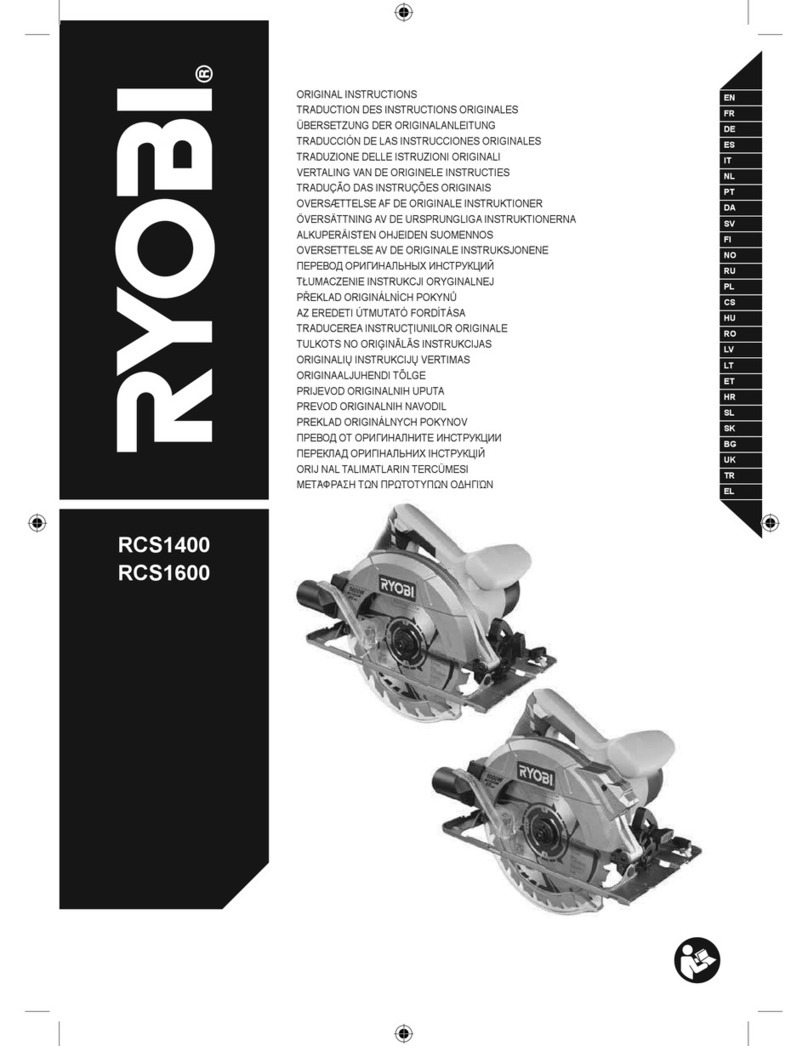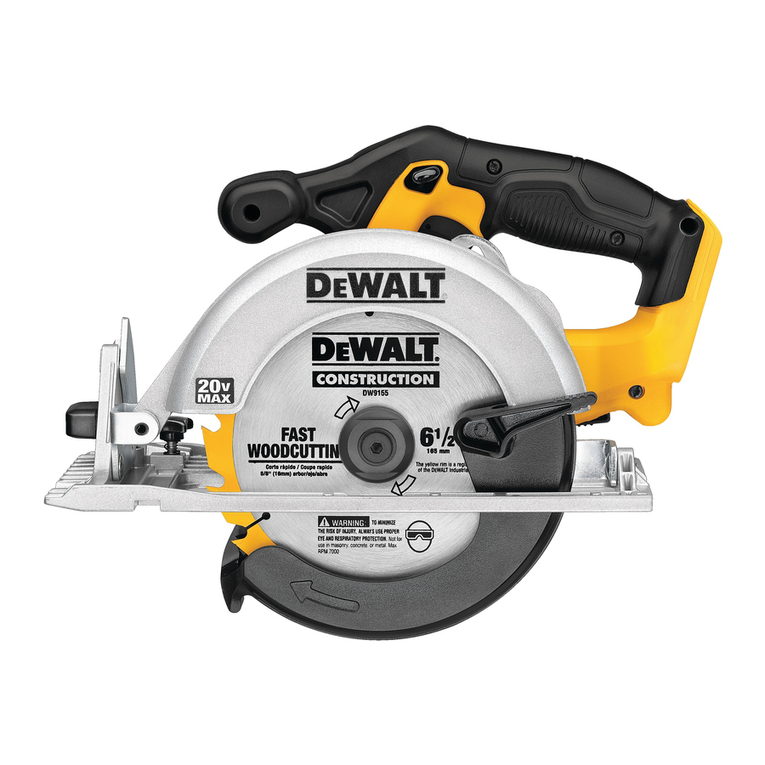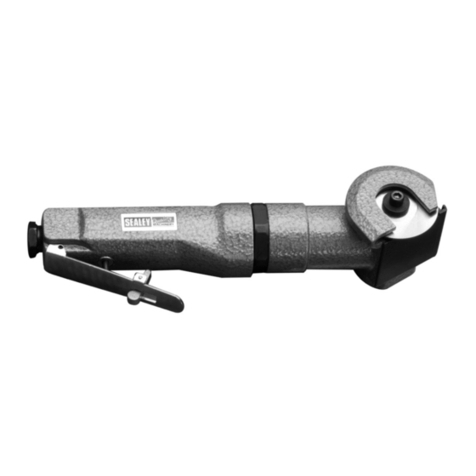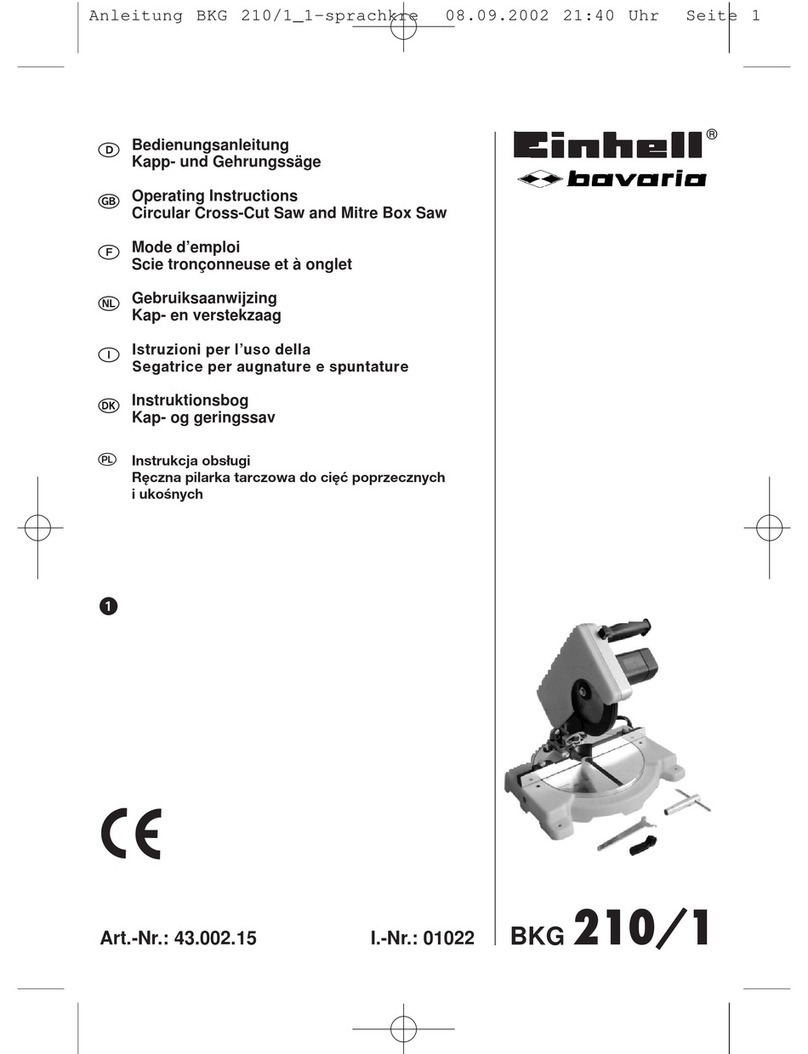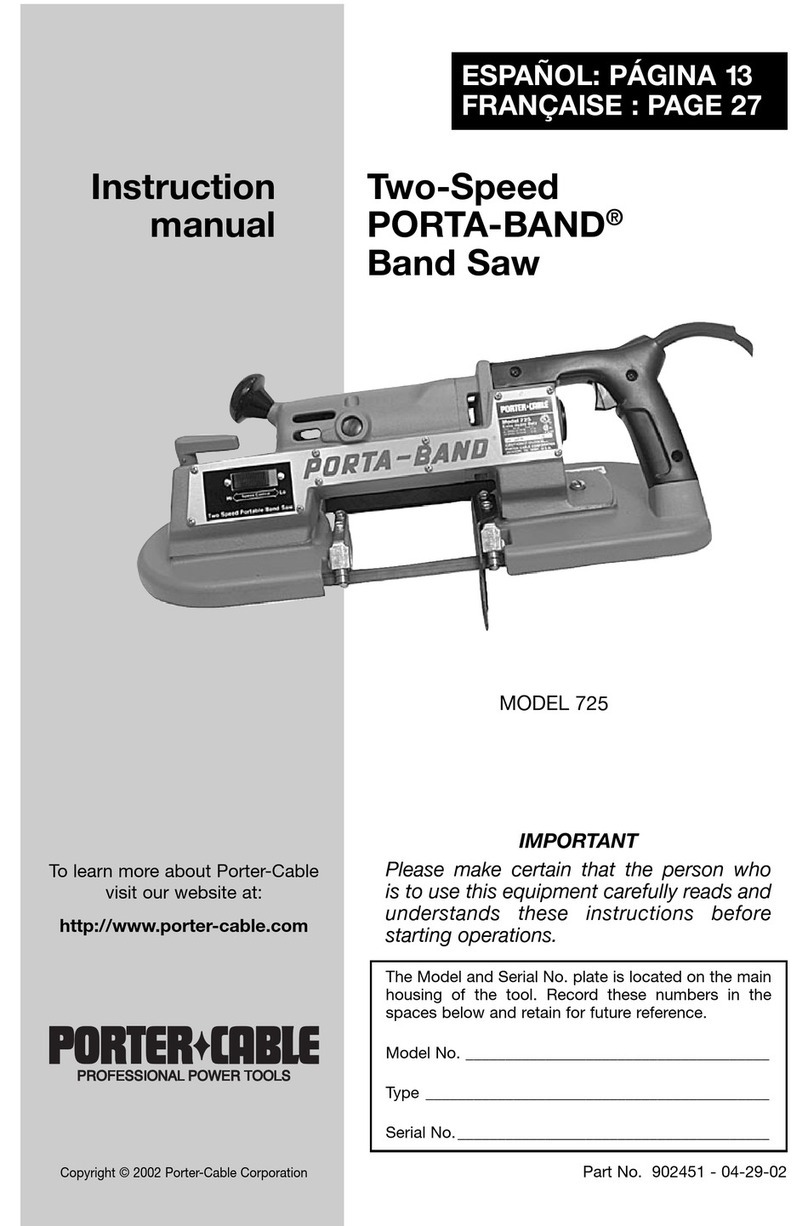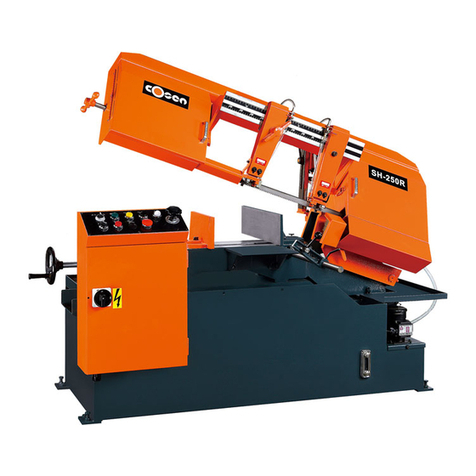
10
ENGLISH
Explanation of general view
1 Socket wrench
2 Wrench holder
3Bolt
4 Center cover
5 Safety cover
6Hexbolt
7Arrow
8 Blade case
9 Shaft lock
10 Hex bolt
11 Saw blade
12 Arrow
13 Inner flange
14 Spindle
15 Hex bolt
16 Saw blade
17 Outer flange
18 Ring 30 mm in outer diameter
19 Dust nozzle
20 Dust bag
21 Fastener
22 Kerf board
23 Knob
24 Carbide tip
25 Left bevel cut
26 Straight cut
27 Right bevel cut
28 Adjusting bolt
29 Turn base
30 Top surface of turn base
31 Periphery of blade
32 Guide fence
33 Lock pin
34 Grip
35 Pointer
36 Miter scale
37 Lever
38 Loosen
39 Tighten
40 Arm
41 Pointer
42 Bevel scale
43 Sub-fence
44 Sub-fence R
45 Screws
46 Vise arm
47 Vise rod
48 Screw
49 Clamp screw
50 Support
51 Turn base
52 Vise plate
53 Vise nut
54 Vise knob
55 Holder
56 Lock-off button
57 Handle
58 Switch trigger
59 Lever
60 Apply pressure in parallel
with blade
61 Vise
62 Spacer block
63 Aluminum extrusion
64 Adjusting screw
65 Stopper arm
66 Cut grooves with blade
67 Stopper pin
68 Hex bolts
69 Triangular rule
70 Screw
71 Hex bolt
72 Hex bolt
73 Screws
74 Arm holder
75 Right 45° bevel angle
adjusting bolt
76 Left 45° bevel angle
adjusting bolt
77 Hex lock nut
78 Kerf block
79 Limit mark
80 Brush holder cap
81 Screwdriver
SPECIFICATIONS
Model LS1013
Blade diameter .................................................................................................................................. 250 mm — 260 mm
Hole diameter ........................................................................................................................................................ 30 mm
Max. cutting capacities (H x W) with blade 260 mm in diameter
No load speed (min–1) ............................................................................................................................................ 3,700
Dimensions (L x W x H) .....................................................................................................760 mm x 520 mm x 625 mm
Net weight ...............................................................................................................................................................21 kg
• Due to our continuing program of research and devel-
opment, the specifications herein are subject to change
without notice.
• Note: Specifications may differ from country to country.
Power supply
The tool should be connected only to a power supply of
the same voltage as indicated on the nameplate, and can
only be operated on single-phase AC supply. They are
double-insulated in accordance with European Standard
and can, therefore, also be used from sockets without
earth wire.
Safety hints
For your own safety, please refer to the enclosed safety
instructions.
ADDITIONAL SAFETY RULES
1. Wear eye protection.
2. Do not operate saw without guards in place.
3. Don’t use the tool in the presence of flammable
liquids or gases.
4. Check the blade carefully for cracks or damage
before operation. Replace cracked or damaged
blade immediately.
5. Use only flanges specified for this tool.
6. Be careful not to damage the arbor, flanges
(especially the installing surface) or bolt. Dam-
age to these parts could result in blade break-
age.
7. Make sure that the turn base is properly secured
so it will not move during operation.
Miter angle Bevel angle
45° (left) 0° 45° (right)
0° 50 mm x 310 mm 91 mm x 310 mm 31 mm x 310 mm
45° (left and right) 50 mm x 220 mm 91 mm x 220 mm 31 mm x 220 mm
52° (right) — 91 mm x 190 mm —

